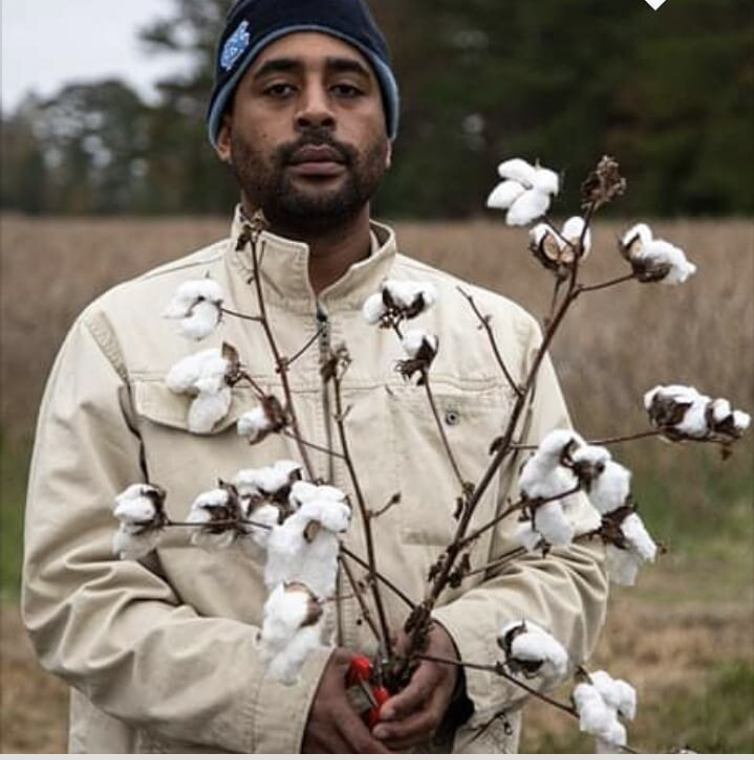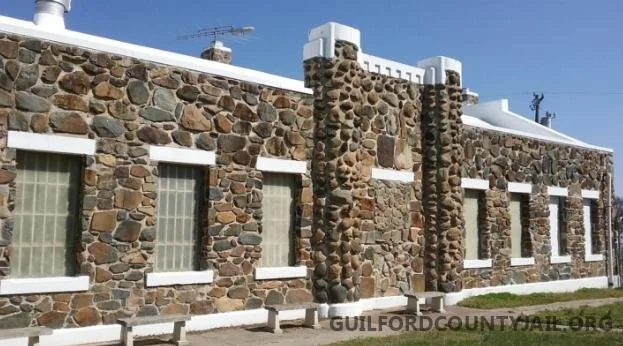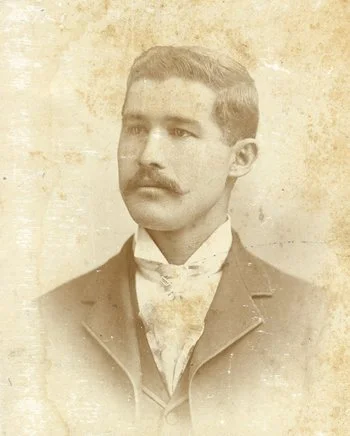
NORTH CAROLINA
Tillery, NC
Name: Roanoke River Correctional Institution Aka the Caledonia State Prison Farm
Population: 1038
Founded: Opened in 1892 - Present
About 5,500 acres of farmland are under cultivation at Caledonia.
Who Owns It and General Facts:
The state of NC
Correction Enterprises, the official products provider of the North Carolina State Prison System, manages the prison farm, which contains cattle, chickens, and row crops such as corn, wheat, cotton, and soybeans. In addition, the inmates are forced to farm 300 acres of vegetables like tomatoes, sweet corn, collard greens, sweet potatoes, squash, cucumbers, and melons. During the off-season, fresh vegetables are grown in greenhouses. (NC Department of Safety)
Inmates also work in the prison's cannery. The cannery processes and cans crops grown on the farm for distribution to prison kitchens across the state. It is 12,770 square feet and has the capability of canning about 500,000 gallons of commodities per year. Inmates may also work as janitors or kitchen help. (NCDPS)
Roanoke River CI's main building initially retained men and women. Eight downstairs dormitories housed men, and two upstairs dormitories housed women. (NCDPS)
Land History:
Caledonia refers to an antebellum plantation on the prison property where slave labor worked in the fields, the department said. The prison was renamed to remove itself from its racist history. (NC Public Radio)
Residents of Tillery formed one of the first chapters of the National Association for the Advancement of Colored People (NAACP) in eastern North Carolina.
Unusual Facts:
Julius Tillery is a native of the Roanoke Valley, North Carolina, and a 5th-generation cotton farmer. He founded BlackCotton in 2016 to honor his roots and promote Black-grown cotton. He uses the cotton he harvests and creates home décor, art, and jewelry. His great-great-grandfather was the first in the family to be born free in 1871 in Halifax County. Tillery works alongside his father, James Tillery Jr., today. As a child, his father and grandfather showed Tillery how to grow cotton, corn, and peanuts until he graduated from high school. (Weisner)
Julius is the North Carolina State Coordinator for the Black Family Land Trust. His career has focused on working as an advocate and resource provider in the North Carolina agriculture and environmental sectors since 2009.
Julius Tillery
https://www.blackcotton.us/
Black Mountain
North Carolina
Name: Originally named the Swannanoa Correctional Center for Women, now called the Western Correctional Center for Women
Population: 366
Founded: 1892
Who Owns It and General Facts:
Owned by NC State
Women previously housed at Black Mountain Correctional Center for Women were transferred to the former Swannanoa CCW in July 2008. (NC Dept of Corrections)
Land History:
The Civil War was a bit more tense and violent in the Appalachian Mountains, where numerous Virginia, Eastern Tennessee, and Western North Carolina residents remained loyal to the Union. Western N.C. suffered greatly from raids. Murders, burning of homes, destruction of land, and theft happened so often that Confederates considered much of the county, particularly the Laurel Valley, as a home base of guerrilla warfare. Richmond, VA, and Raleigh, NC, sent troops to arrest draft dodgers and kill those who abandoned the war to restore "law and order" in western NC communities. When much of eastern North Carolina fell under federal control, many Black freedmen and some whites enlisted in Union regiments. The lack of food for families and soldiers alike fuelled a growing call for an end to the war, led by William W. Holden, the North Carolina Standard editor of the Raleigh-based newspaper. (NC History Project)
The Brown Mountain Lights:
The Brown Mountain Lights are one of the most famous North Carolina paranormal spots. (Roberts, 51)
Some of the earliest reports came from Cherokee and Catawba Indians, settlers, and Civil War soldiers. (Roberts, 52)
Some scientists have progressed the many past theories saying that the lights are a mirage. They believe the shimmering orbs are reflections from Black Mountain, Hickory, Lenoir, and other towns in Western NC through some rare atmospheric conditions. The only downside to this theory is that the lights existed before the Civil War, long before electricity was used to generate light. (Roberts)
The Brown Mountain Lights were featured in a 1999 episode of the X-Files. (Brown Mountain Online )
Unusual Facts:
Swannanoa, the original name of the prison, refers to the construction of an Asheville tunnel that resulted in the deaths of numerous Black prisoners who worked on it in the late 1800s. The prison changed its name in 2021. (Kehrberg and Keith)
Zelda Fitzgerald, a Southern belle who hailed from Montgomery, Alabama, turned jazz-age socialite and was known as “the first American flapper,” died in Asheville, NC, about 30 minutes away from Black Mountain. Zelda was a creative who wrote short stories for magazines, painted, and loved ballet. (Britannica Encyclopedia)
Greensboro, NC
Name: Guilford Country Prison Farm (Elon, NC)
Population: Unknown / 806 acres
Founded: 1935
Who Owns It and General Facts:
Established in 1935 to house black inmates
It is now a public nature area, referred to by the county as a “passive park,” has recently opened to the public for low-impact activities such as birding. Spanning 806 acres, with 720 acres managed by the Guilford County Facilities and Parks Department, the property features a pond, woodlands, farm fields, and expansive meadows that are particularly attractive to Eastern Meadowlarks and other grassland birds. Several hiking trails, including sections of the Mountains-to-Sea Trail, are already accessible. County staff report that 150 species of birds have been recorded in the area.
Land History:
Guilford County's history is closely linked to Greensboro and High Point. Named after General Nathanael Greene, Greensboro (originally “Greensborough”) was first inhabited by the Occaneechi and other Siouan tribes (particularly the Waccamaw) before European colonizers arrived.
The Occaneechi
The first historical reference to the Occaneechi dates back to 1650, when an English explorer reported that the "Occonacheans" lived on a small island in the Roanoke River and farmed cornfields on the north bank. Neighboring islands were inhabited by the Tutelo and Saponi tribes. The Occaneechi played a key role in the fur trade between Virginians and Piedmont tribes during the 1660s and 1670s. Although their language is no longer spoken, it was likely an eastern Siouan dialect similar to that of the Saponi and Tutelo.
In the late 1600s, Virginia explorer Abraham Wood documented the Occaneechi's influence on the deerskin trade. Their strategic location along the Great Trading Path connected them with the Virginia colony, the Catawba, and the Cherokee tribes. In 1676, they were ambushed and driven out by Nathaniel Bacon and English settlers, prompting their migration from Roanoke to the Eno River in modern-day Orange County.
Between 1983 and 1986, archaeologists from UNC Chapel Hill excavated the Occaneechi village in present-day Hillsborough. They uncovered a small village with about twelve wigwam houses, a central square, and a sweat lodge, all protected by a defensive fortification. A cemetery outside the village suggested battles with the Iroquois and European diseases from the 1700s. Artifacts found included clay pottery, stone tools, and European trade items like beads and axes. Animal bones and plant remains indicated a diet of corn, beans, squash, and deer. The tribe observed five seasons and was led by two chiefs, one overseeing warfare and the other agriculture and hunting. (source)
The Waccamaw
The Waccamaw community, a Siouan-speaking tribe related to the Cape Fear tribe, inhabited southeastern North Carolina. During the late sixteenth century, they were part of various autonomous tribal groups known as "eastern Siouans." Their territory spanned from south of the Neuse River along the coast to the lower Cape Fear, extending inland to Green Swamp and the junction of the Pee Dee and Waccamaw Rivers (in SC). They were likely semi-nomadic, residing on high-ground "islands" within swamps, living in dome-shaped bark houses, and practicing shamanism with distinct mortuary customs.
Their interaction with European settlers included trade, alliances, and conflicts, marked by European diseases, displacement from settlement, and warfare, notably during the Tuscarora War (1711-13) and Yamassee War (1715). These conflicts greatly reduced their population, leading some Waccamaw to seek refuge in isolated swamps near Lake Waccamaw or to settle among the Catawba to the west. Historical records are sparse until 1790, when the U.S. Census noted common Waccamaw surnames among residents in small, isolated communities. (source)
Colonization
Scotch-Irish, Germans, and English and Welsh Quakers began moving to Greensboro in the mid-eighteenth century. By 1750, Quakers, having migrated from the north, became the dominant religious group in western Guilford. In 1837, they established a boarding school that eventually became Guilford College, the South's first coeducational institution.
In the early 1800s, Greensboro's economy focused on textile manufacturing. Henry Humphreys built the first steam-powered cotton mill, and several textile companies followed. In 1895, Moses and Caesar Cone founded the Southern Finishing and Warehouse Company, and Burlington Mills diversified their operations in 1935. The VF Corporation, the largest denim jeans producer in the nation, is also based in Greensboro. Other successful companies include P. Lorillard (tobacco manufacturer), Jefferson-Pilot Corporation (insurance and media conglomerate), General Dynamics Advanced Technology Systems (nationwide communication leader), and Lucent Technologies (a derivative of AT&T).
The Greensboro 1979 massacre
On November 3, 1979, a rally and march involving Black industrial workers and Communists was planned in Greensboro, North Carolina, to protest the Ku Klux Klan. The "Death to the Klan March" was set to begin in the predominantly Black housing project of Morningside Homes. Communist organizers publicly challenged the Klan to show up and "face the wrath of the people." During the rally, a caravan of cars carrying Klansmen and members of the American Nazi Party drove by the housing project where the Communists and other anti-Klan activists were gathered. The KKK shot and killed 5 people as their actions were televised. It is believed that the current alt right movement in the United States was birthed out of these KKK members.
In November 1980, a jury found the defendants not guilty on grounds of self-defense. After extensive FBI investigations, the case was reopened, and in 1983, nine people were indicted for conspiracy to violate the protesters' civil rights. However, these defendants were also acquitted.
The community in Greensboro was outraged not only by the violence but also by the police department's failure to act promptly to prevent the killings. Frustration grew as the courts repeatedly failed to convict anyone for the shootings.
In 2004, a Truth & Reconciliation Commission, inspired by similar initiatives in South Africa, was established to address the 1979 killings. The Commission began holding public hearings, operating on the principle that the community cannot heal until past events are honestly and openly confronted. The community has mostly healed since the slayings but no conviction was still seen as a miscarriage of justice.
Wilmington, NC
Name: New Hanover Correctional Center
Population: 384 (men)
Founded: 1915
Who Owns It: NC State
North Carolina's first permanent county prison was constructed in 1915 in New Hanover County. A two-story concrete building was erected in 1915 to house 200 county prisoners. Equipped with electricity, modern plumbing, and central heating, the facility was thought to have begun a new age in prison construction and design. Offenders slept on cots in two large rooms, one for each race, separated by a guard room. New Hanover was one of 51 county prisons that the state assumed responsibility for with the passage of the Conner Bill in 1931. It was one of 61 field unit prisons renovated or built during the late 1930s to house offenders who worked building roads. (North Carolina Department of Public Safety)
Prison engineers supervised offenders in remodeling the prison's original building to provide classrooms and office space that opened in l994. An 18-bed dormitory provides administrative and disciplinary segregation space for minimum custody offenders needing to be segregated.” (NCDPS)
New Hanover CC operates one of the most extensive work release facilities in the state, with more than 140 offenders leaving the prison daily to work at various businesses in the community. Offenders may be assigned to multiple jobs such as N.C. Department of Transportation road squads, municipal labor contracts, ILM Airport in Wilmington, and the USS Battleship North Carolina. Offenders may also be assigned to on-site jobs in housekeeping, maintenance, or the kitchen (NCDPS)
Land History:
Wilmington was the largest town and had a substantial harbor in antebellum North Carolina. The city had a reputation as "an asylum for Runaways" because of its location near the mouth of the Cape Fear River, its steady sea traffic, its strong ties to New England, and its Black-majority population. (Cecelski, David S., 5)
Runaway enslaved people depended on kindred souls invisible in the swamps of the coastal Carolinas. Slaveholders often attempted, and with violence, to eliminate those defiant individuals that inhabited North Carolina to stop the Carolina underground railroad. (Cecelski, David S., 9)
With the knowledge of Wilmington having once been a haven to enslaved people who broke away from forced servitude; shockingly, one of the worst massacres in the United States happened in Wilmington during the Reconstruction era:
Before the violence of the massacre, Wilmington was integrated. David Zucchino, author of Wilmington’s Lie: The Murderous Coup of 1898 and the Rise of White Supremacy, told NPR, “The Black newspaper, for example, The Daily Record, white businessmen bought ads in the paper. There were ads in the newspaper that appealed to both Blacks and whites. Blacks worked in white businesses, with the whites clearly in charge but fairly cordial relations. There was racial segregation at the time, but Wilmington was unusual in that a lot of the neighborhoods were mixed, where you had Blacks and whites living together, even in the working classes, which was, again, a little unusual for a city in the South at that time.” (NPR)
Democrats, or the rebranded Confederacy, created a scheme to end the “Negro domination” in the 1898 state legislative elections. (Crain) The Democrat’s plan consisted of enlisting white journalists and cartoonists, white men who had good public speaking skills, and the “Red Shirts,” who were an armed white supremacist militia from South Carolina. This was to create a media firestorm that painted Black people in Wilmington as radicals and Black nationalists planning a riot. (Cain)
The white supremacists started their media launch by using an editorial by Alex Manly, the editor of Wilmington’s Black newspaper, the Daily Record, to stir a firestorm at the time of the elections. The editorial responded to a speech by a Georgia socialite who promoted lynching as a method “to protect woman’s dearest possession from the ravening human beast.” (Wooley) Manly denounced lynching and pointed out the hypocrisy of describing Black men as “big burly, black brute(s)” (Wooley) when in reality, it was white men who regularly raped Black women with freedom. He also stated that some relations between the races were consensual. (Wooley)
Alex Manly, editor.
Source: UNC-Chapel Hill
The area became a police state run by a KKK member that patrolled Black people on every block in Wilmington. The supposed explanation for the patrols was the false threat of a violent uprising. These rumors, a white Populist remembered, distressed “everyone but those who were behind the plot.” One white woman in Wilmington rejected the patrols as a “perfect farce,” observing that, before the coup, blacks were “almost obsequiously polite.” However, as the lies spread, one reporter believed whites in Wilmington bought enough guns to sufficiently provide an Army division. (Cain)
In recent years, David Zucchino had exposed that a single hardware store sold a hundred and twenty-five rifles, more than two hundred pistols, and nearly fifty shotguns in the five weeks before the massacre. Merchants declined the sale of guns to the Black community, and few previously possessed them. When two freedmen attempted to purchase pistols and rifles direct from an out-of-state producer, their order was forwarded to a newspaper that ran a story headlined “the Wilmington Negroes are Trying to Buy Guns.” (Cain)
After the Democrats scared all Black citizens into not voting, they won in a landslide in the house of representatives. The new power led them to overthrow Wilmington Black leaders by using force and murdering between 60-and 300 Black citizens. (The numbers of those murdered are inconclusive, and the researcher read many things with the numbers 60-300 listed as the count.) After the attack, thousands of Black citizens fled.
The death toll is hard to piece together as the white actors and media controlled the narrative at the time. John Sullivan of the Third Person Project told NPR, “You had a lot of bodies pushed into the river,” regarding the Wilmington massacre. He mentioned that people could have been buried in unmarked graves, “You had bodies buried privately in backyards, sometimes days after the killings, because families were afraid to come forward and be associated with the victims.” It is likely that those who ran and hid in the swamps either died of exposure or were lynched by the mob. ( Neuman)
Part of how historians have been able to tell the real story of the Wilmington Massacre is by looking back at newspaper archives—from towns all across North Carolina, not just Wilmington—where similar violence broke out that day. “They burned down black newspapers all over the state,” David S. Cecelski, a North Carolina native and author, says. “They shut down entry to the city from blacks and Republicans ... It’s important not to forget that this was planned. This wasn’t two people getting in a fight on a street corner and sparking underlying racial tensions or something like that.” ( LaFrance and Newkirk )
Unusual Facts:
Carolina Beach State Park is one of the few places Venus Flytraps grow in the wild.
Sugar Ray Leonard is from Wilmington, NC.
“The 1898 Memorial Park in Wilmington remembers the massacre with six, 16-foot tall bronze paddles symbolizing the role of water in the spiritual belief system of people from the African continent.” (Wilmington Tourism)
More Media





